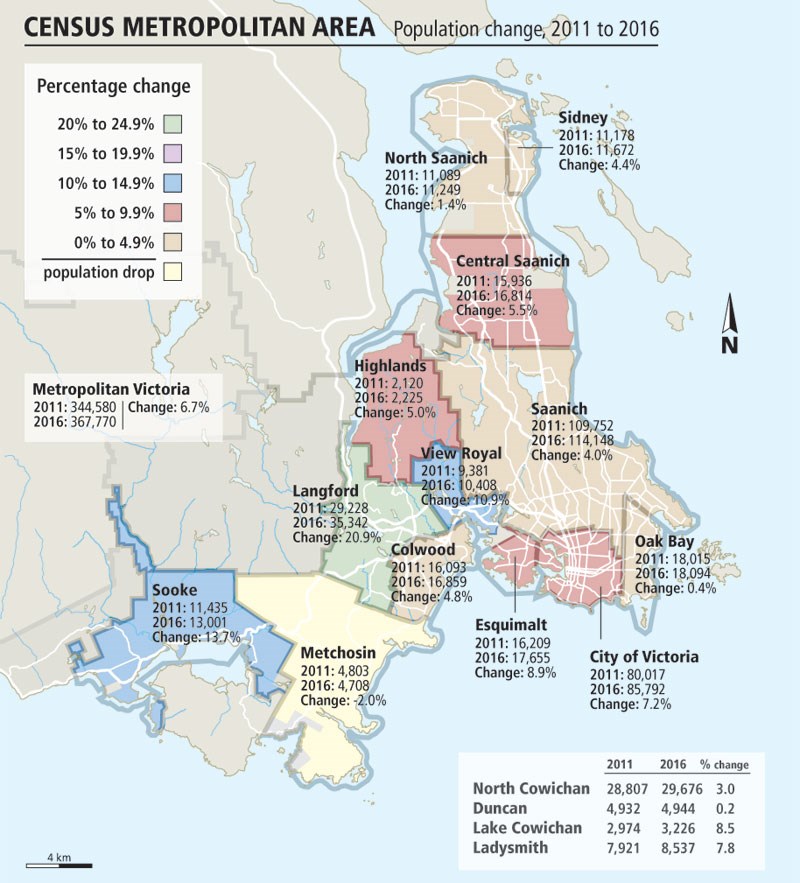The 2016 census has confirmed that Victoria has thousands of unoccupied dwellings.
Out of 49,212 dwellings, 3,540, or 7.9 per cent, were found to be unoccupied in Statistics Canada’s survey. The total number of dwellings grew by 6,252 from 2011 to 2016.
Unoccupied housing has been a concern for Victoria council, with some members suggesting that an extra tax be levied on such properties.
Mayor Lisa Helps said the unoccupied dwellings could represent underutilized homes in an extremely tight housing and rental market. She would like more detail. “Does this include vacant and derelict buildings? I can count at least 30 in Victoria that are underused,” Helps said. “We need power from the province to deal with this.”
Kelly Newhook, executive director of Together Against Poverty Society, said governments need better tools to ensure all potential housing is fully used. “I am looking out my office window at View Towers where we know there are numerous empty suites — and no one understands why — when there are more and more people desperately looking for housing,” she said.
Statistics Canada conducted a census in 2016 and on Wednesday released the first set of information from that survey, concentrating on population. The previous census was in 2011, and comparisons here are being made with that year.
In Oak Bay, the population grew by just 79 people, but 357 dwellings were added, for a total of 8,122. There were 385 unoccupied dwellings — about 4.7 per cent.
Esquimalt’s population grew by 1,446 residents, or 8.9 per cent, rising to 17,655 from 16,209. But dwellings only increased by 707, or eight per cent.
In Langford, where population growth was highest in the capital region, 3,226 dwellings were added. Its population grew to 35,342 from 29,228, an increase of 20.9 per cent. Langford added 3,226 dwellings for a 21.6 per cent increase.
One of the biggest challenges of population growth has been transportation, said Langford Mayor Stew Young. Langford residents going into Victoria to work face daily gridlock. “The reality is everybody needs a car now … when you’ve got that huge distance between Langford and Victoria.”
For the Victoria Census Metropolitan Area, which includes all capital region municipalities, the 2016 population was 367,770, up from 344,580 in 2011 — an additional 23,190 residents and a 6.7 per cent jump. That outpaced provincial and national averages.
But population growth in the region was uneven. While Langford increased by 20.9 per cent, Oak Bay was up by just 0.4 per cent, and Metchosin dropped by two per cent.
Victoria grew to 85,792 from 80,017, an increase of 5,775, close to Langford’s 6,114 increase, but the percentage increase was much smaller: a 7.2 per cent jump versus Langford’s 20.9 per cent.
Victoria is the seventh most densely populated city in Canada with 4,405.8 residents per square kilometre.
Helps said she was excited to see the capital city’s numbers being similar to fast-growing Langford. “The narrative is often that everyone is moving to West Shore and that’s where the development is, so it’s nice to see the actual numbers show a different story. I’m curious to know who the numbers represent.”



